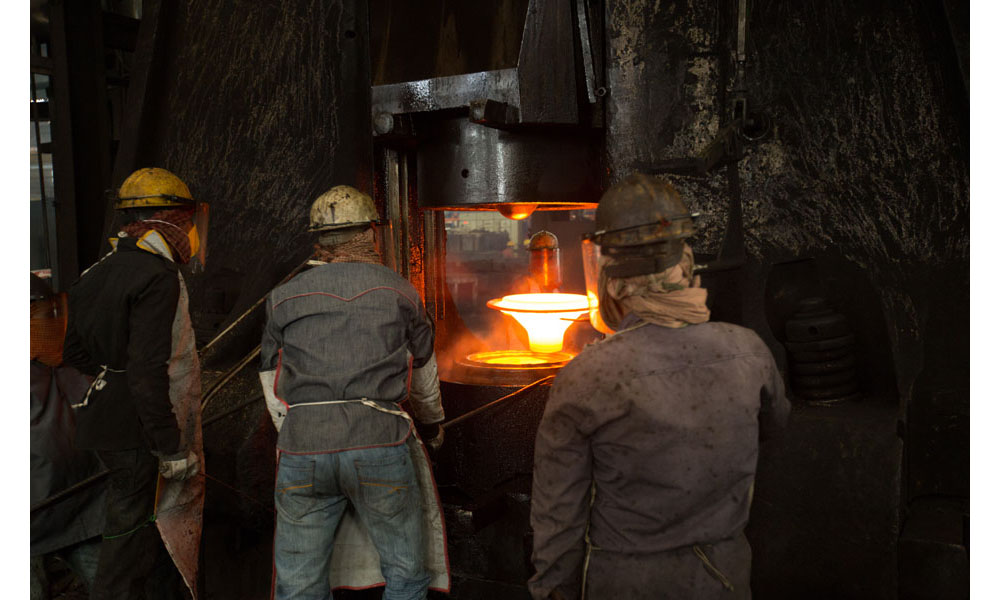AISI 1050 Carbon Steel (UNS G10500)
Carbon steels contain carbon as the main alloying element. They are designated by AISI four-digit numbers, and contain 0.4% of silicon and 1.2% of manganese. Molybdenum, chromium, nickel, copper, and aluminium are present in small quantities. Impurities such as sulfur and phosphorous are also found in these steels.
AISI 1050 Carbon Steel (UNS G10500)
Introduction
Carbon steels contain carbon as the main alloying element. They are designated by AISI four-digit numbers, and contain 0.4% of silicon and 1.2% of manganese. Molybdenum, chromium, nickel, copper, and aluminium are present in small quantities. Impurities such as sulfur and phosphorous are also found in these steels.
Chemical Composition
The chemical composition of AISI 1050 carbon steel is tabulated below.
| Element | Content (%) |
|---|---|
| Iron, Fe | 98.46-98.92 |
| Manganese, Mn | 0.60-0.90 |
| Carbon, C | 0.470-0.55 |
| Sulfur, S | ≤ 0.050 |
| Phosphorous, P | ≤ 0.040 |
Physical Properties
The following table shows the physical properties of AISI 1050 carbon steel.
| Properties | Metric | Imperial |
|---|---|---|
| Density | 7.85 g/cm3 | 0.284 lb/in³ |
Mechanical Properties
The mechanical properties of the cold drawn AISI 1050 carbon steel are outlined in the following table.
| Properties | Metric | Imperial |
|---|---|---|
| Tensile strength | 690 MPa | 100000 psi |
| Yield strength | 580 MPa | 84100 psi |
| Shear modulus (typical for steel) | 80 GPa | 11600 ksi |
| Bulk modulus (typical for steel) | 140 GPa | 20300 ksi |
| Elastic modulus | 190-210 GPa | 27557-30458 ksi |
| Poisson’s ratio | 0.27-0.30 | 0.27-0.30 |
| Elongation at break (in 50 mm) | 10% | 10% |
| Reduction of area | 30% | 30% |
| Hardness, Rockwell C (converted from Brinell hardness. Value below normal HRC range, for comparison purposes only) | 13 | - |
| Hardness, Brinell | 197 | 197 |
| Hardness, Knoop (converted from Brinell hardness) | 219 | 219 |
| Hardness, Rockwell B (converted from Brinell hardness) | 92 | 92 |
| Hardness, Rockwell C (converted from Brinell hardness. Value below normal HRC range, for comparison purposes only) | 13 | 13 |
| Hardness, Vickers (converted from Brinell hardness) | 207 | 207 |
Thermal Properties
The thermal properties of AISI 1050 carbon steel are given in the following table.
| Properties | Metric | Imperial |
|---|---|---|
| Thermal conductivity (typical steel) | 49.8 W/mK | 346 BTU in/hr.ft².°F |
Other Designations
Other designations that are equivalent to AISI 1050 carbon steel include:
- AMS 5085
- ASTM A29 (1050)
- ASTM A510 (1050)
- ASTM A513
- ASTM A519 (1050)
- ASTM A576 (1050)
- ASTM A682 (1050)
- ASTM A827
- ASTM A830
- QQ S700 (C1050)
- SAE J1397 (1050)
- SAE J403 (1050)
- SAE J412 (1050)
FORGING
AISI 1055 steel is forged between 2200 and 1700ºF (1205 and 925ºC.) After forging the steel could be transferred to a furnace held at roughly the forging finishing temperature, as a preliminary to an annealing cycle.
HEAT TREATMENT
ANNEALING
As mentioned above, forgings may be transferred to a furnace at a temperature that may approximate to the forging finishing temperature. The full annealing cycle of this grade is a soak at a temperature of 1450-1600ºF (790-870ºC) cooling to 1200ºF (650ºC) at 50ºF (28ºC) per hour, soaking and subsequently air cooling.
NORMALIZING
This steel will on occasion require normalizing prior to further heat treatment such as hardening and tempering. This is carried out at a temperature of 1650ºF (900ºC) followed by air cooling.
HARDENING
This steel is austenitized at 1475-1550ºF (800-845ºC) followed by water or oil quench depending upon section size and complexity.
TEMPERING
This steel will be tempered at a temperature to give required mechanical properties, based on past experience. It should be noted that there is a danger of temper brittleness in the temperature range of 500-600ºF (260-315ºC.)
MACHINABILITY
Optimum machinability is obtained from a coarse lamellar pearlite to coarse spheroidite structure.
WELDABILITY
In the event that welding is a requirement, constant preheating and post-weld stress relief should be employed.

